A question on the last eastbound train out of Como in April 1937
|
Photos of an eastbound freight train on Kenosha Pass and at Webster, headed by engines 537 and 72, taken by Otto Perry (see one below), have been identified as that of the last eastbound freight out of Como. It departed Como on the morning of Sunday, April 11. At about the same time, however, a four engine eastbound train departed Leadville for Como, the trip consuming nine hours. So what happened to this train after arriving at Como? When was this train conveyed to Denver? Wouldn’t this have been the last eastbound train out of Como? Have the details of this train been lost to history? Answers, comments anyone?
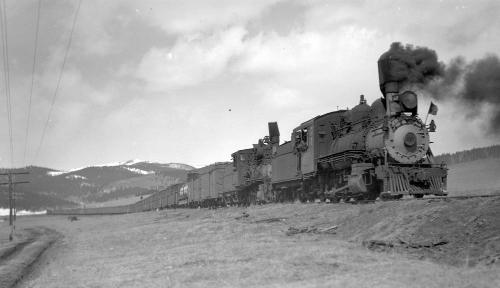
|
|
In part answer to Jim's question I will offer the following.
On April 10, 1937 #65 and #60 arrived at Como from Pine Grove #8, #537, # 76 arrived at Como from Leadville(train sheet shows time for another engine but no number) On April 11, 1937 #537 and # 72 departed Como for Denver On April 12, 1927 #74, #75 and #76 departed Como for Leadville(Brownie Anderson had a 6:30AM call, 12 hours and paid $15.06 for the run on #75) On April 13, 1937 Anderson took DRGW train #16 to Denver from Leadville and several days later got back to Como Adding to the mix on April 11, 1937 #69 and #8 were photographed on the Alma Branch by Otto Perry. Tom Klinger |
Re: A question on the last eastbound train out of Como in April 1937
|
This well-known photo is said to be taken on the Alma Branch, yet
shows the mainline telegraph line. Was the old mainline from Como to Garos considered "the Alma Branch" ???
"Duty above all else except Honor"
|
Re: The last eastbound train out of Como in April 1937.
|
Well knock me Dead!!
I've always figured that Otto Perry shot to be taken at the foot of Kenosha, never did I question this, and oh the shame.  Both the Pict. Supl. to D.SP.&P. and Mineral Belt V-I state in caption, descending Kenosha Eastbound. Actually it is the long lost missing Hoosier photo we've all been looking for.  DPL OP-4079 enlarged. 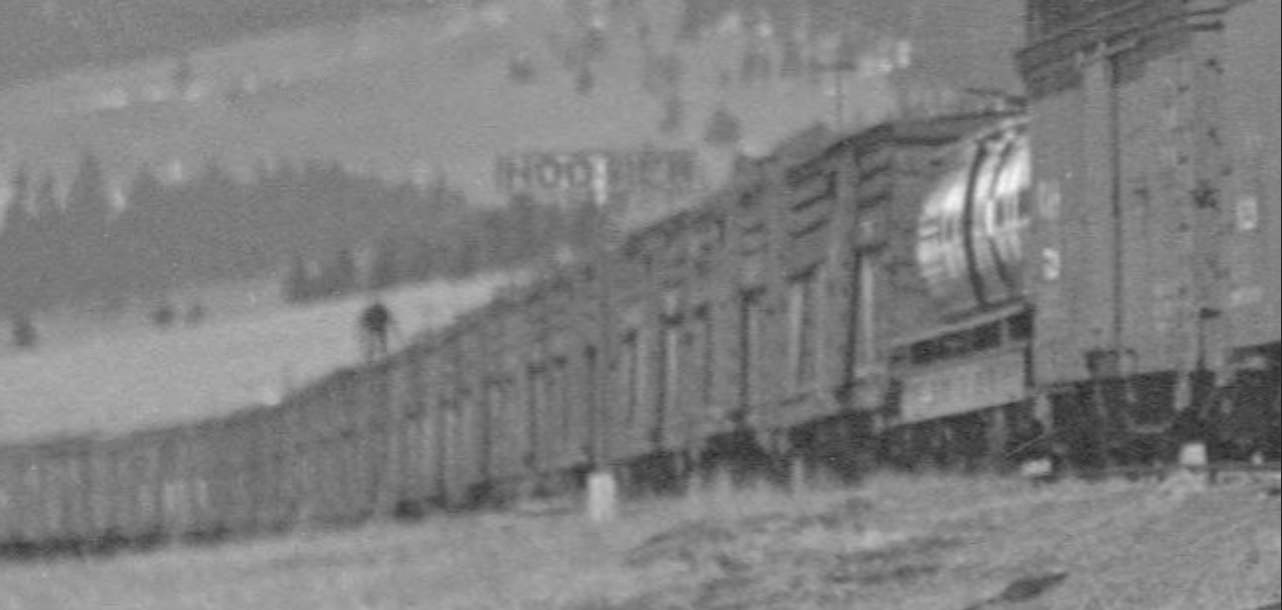 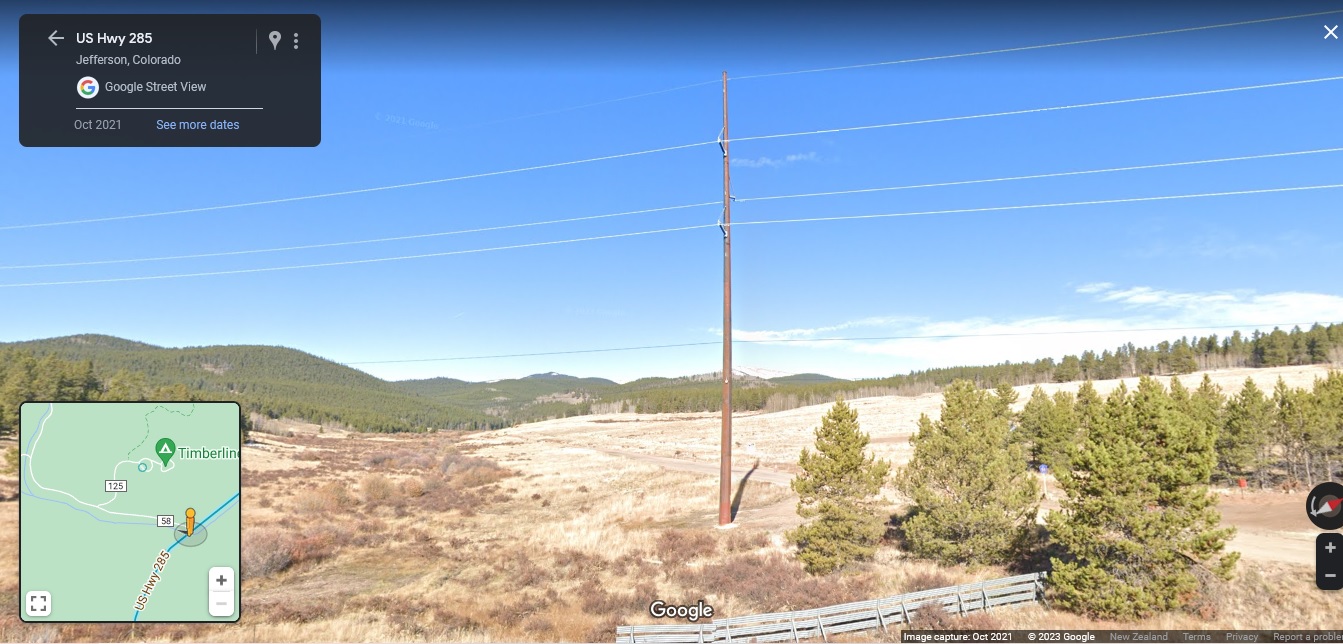
UpSideDownC
in New Zealand |
|
In reply to this post by South Park
After the line south of Garos was abandoned and removed, the section of track between Como and Garos effectively became part of the Alma Branch.
|
|
As Paul Harvey would say, "the rest of the story". If I may add about the east side of Kenosha Pass and Otto Perry. First, April 9, 1937 was a Friday. Perry as a postal employee had to have taken a day off as he photographed the "last" WB passenger at Bailey and photographed from the train on the east side of Boreas Pass. By Sat afternoon he is back south of Denver at Chatfields photographing the "last" EB passenger. How did he do that? Did he ride the train from Como to ?? and catch a ride back? By Sunday the 11th of April Perry is back in the South Park at Alma Jct and then over on Kenosha catching #537 & #72 at Hoosier about MP 73.8, about MP 71-70 where Webster Ballinger lost his life in a 1901 derailment. Next Perry catches the train rolling into Webster MP 69.4 with a brakeman on top. After several photos at Webster Perry photographs the train at Bailey. The top of Kenosha is at about MP76, at about MP 75 McGowen was killed when DRGW # 346 derailed in 1936, Dakes MP 74.8 was the location of charcoal kilns in the late 1880's early 1890's( spur and town), and Hoosier at MP 73.8. At the color screen shot Dakes was located dead center at the evergreen trees. There is a horseshoe curve there swinging to the left. By the 1890's the area was well timbered and technology in smelting changed and coke(from coal) was use rather than charcoal(from wood) for smelting. I know Chris can target the early water tank location at(near) Hoosier! Tom Klinger
|
Re: The last eastbound train out of Como in April 1937.
|
In reply to this post by Chris Walker
Chris, your eye is very good. This seems to be the water tank location discussed elsewhere and here. I have spied the location during drives to the High Country, but am usually in too much of a hurry to pull off and poke around. FYI, the watercourse to the left in the photo is Hoosier Creek, well away from Hoosier Pass further west between Fairplay and Breck.
What caught my eye was both the length of the train--is that 20 cars?--which must have required doubling the hill from Jefferson. Also, notable is the large cut of stock cars, 8-10, which must be enroute to Denver for scrapping as all the steel frame cars have been moved to Leadville already. The cars at the front of the train are all wood frame. I also spy what must be CONX 13 or 14. I don't believe this is CONX 5, as you can see the raised walk above the side sill. The bent handrail is out of focus. The shadows on the side of the car imply a gasoline or oil stain from loading.
Keith Hayes
Leadville in Sn3 |
Re: The last eastbound train out of Como in April 1937.
|
Hey Keith,
Actually, the tank car is big CONX 35. Otto took several photos of the train at Baileys, later that day: https://digital.denverlibrary.org/digital/collection/p15330coll22/id/45822 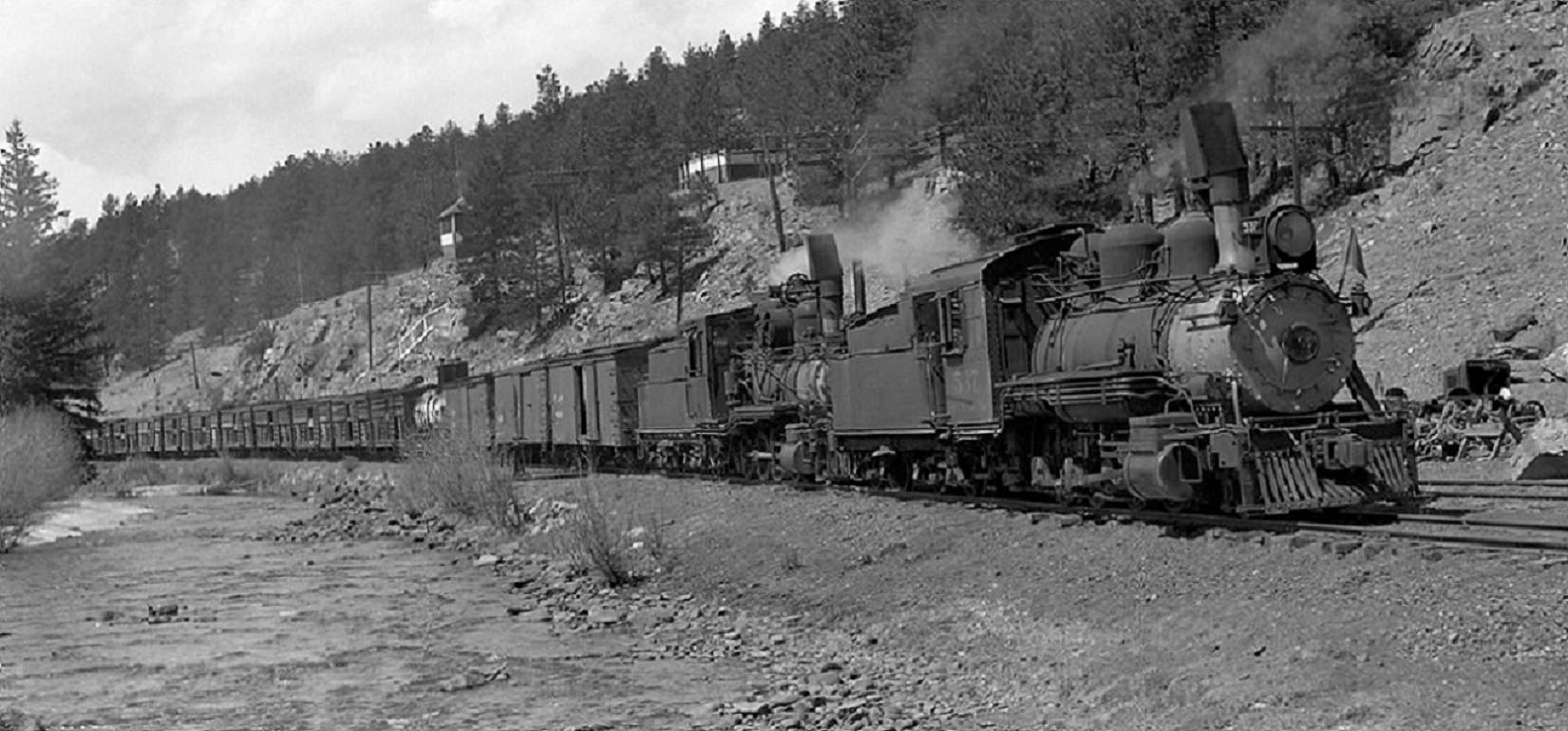 https://digital.denverlibrary.org/digital/collection/p15330coll22/id/45820 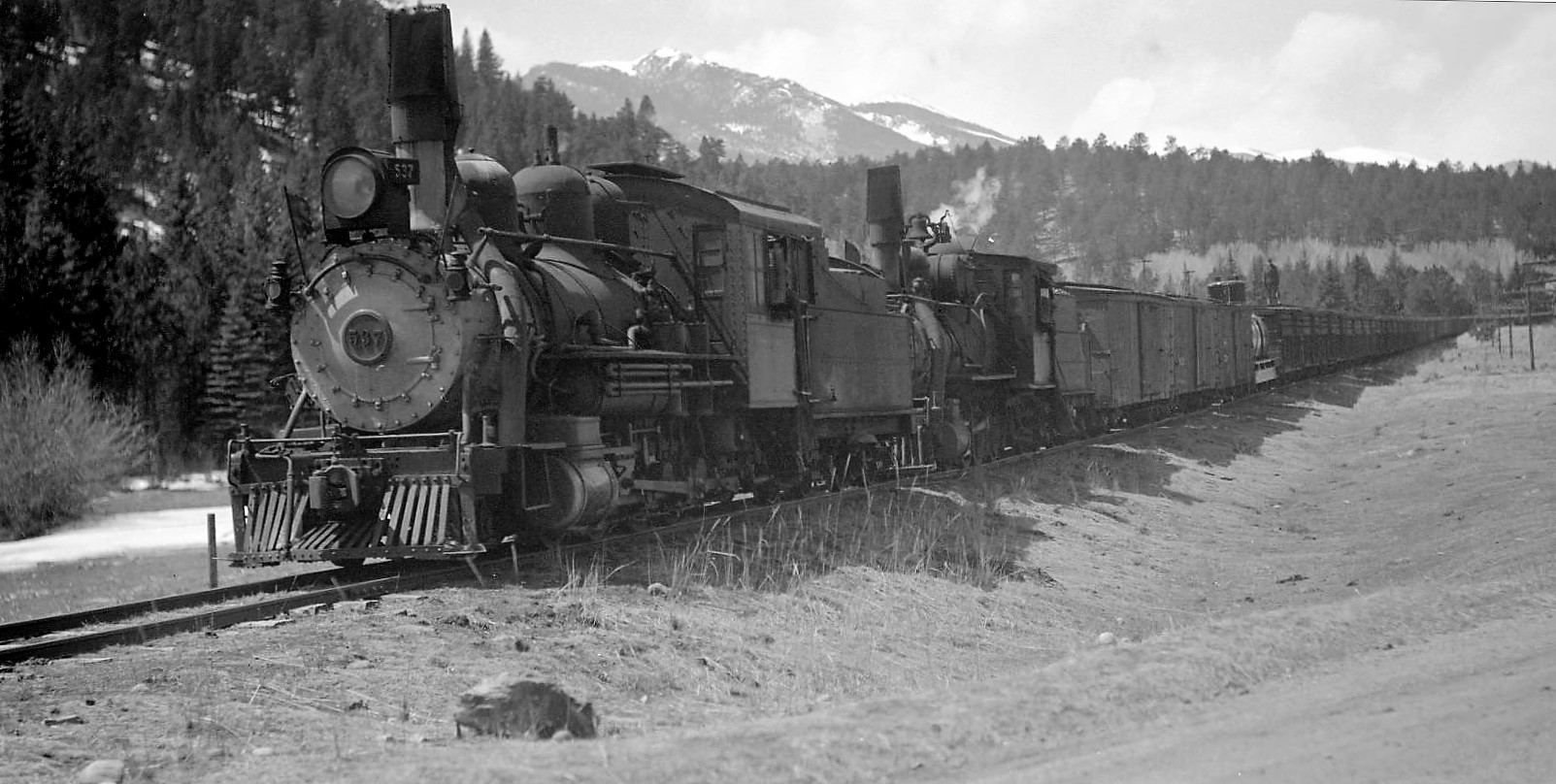 Too bad that Dr. Stears, et al., didn't offer the big CONX tank cars in Sn3 . . . 
Jim Courtney
Poulsbo, WA |
|
April 11, 1937, was the last day the 537 operated under its own power.
|
|
In reply to this post by Keith Hayes
Haha Keith,
 You found the Hoosier Thread, and admit to neglecting my plea for someone passing by to check that area out. 
I look back of my past trips to the US and can count more missed oportunities to check out something just off the Highway, than I have fingers and toes. Arock, Oregon and Bayhorse, Idaho come to mind, just a little off the beaten track, and in the case of Bayhorse, the restored Mill I missed out on; oh how I kick myself for those 10 minutes not taken.  Unlike you living there: I can't go back! Unlike you living there: I can't go back!
Maybe/Possibly retained for Clear Creek service a little while longer: see W.A. Gibson photos at Georgetown Stockpens in September 1937 http://c-sng-discussion-forum.254.s1.nabble.com/Freight-trains-at-Dillon-or-Keystone-tp1868p2525.html or pgs168-169 in Klinger's Clear Creek District Memories. excerpted from CRRA#10 pg176-177 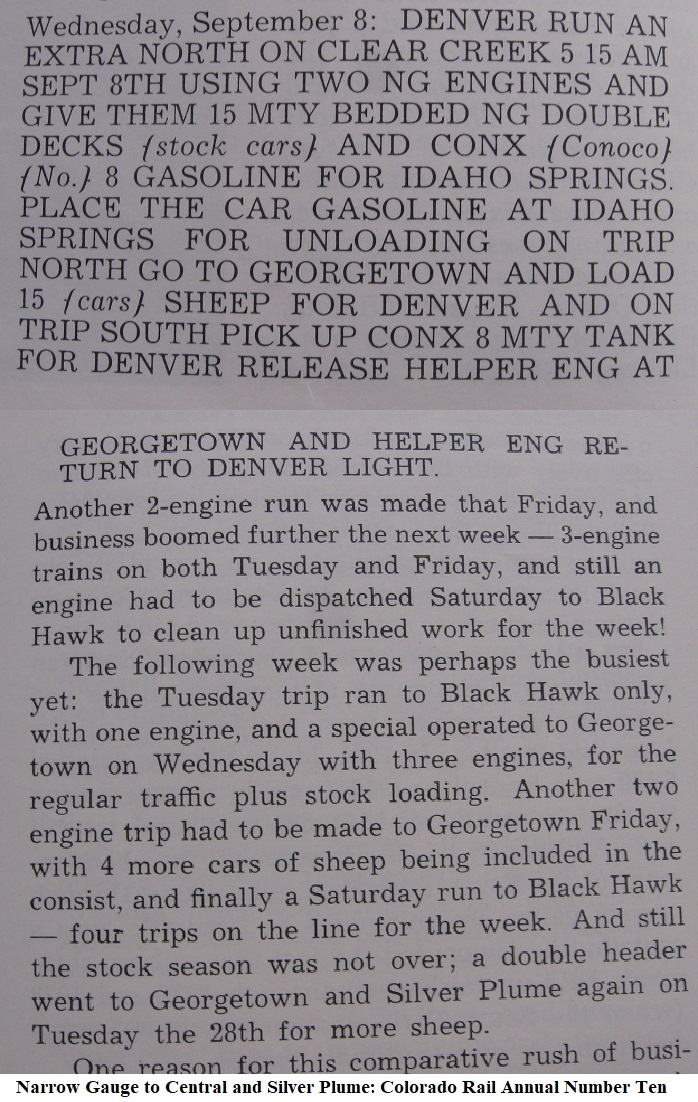
UpSideDownC
in New Zealand |
«
Return to C&Sng Discussion Forum
|
1 view|%1 views
| Free forum by Nabble | Edit this page |

